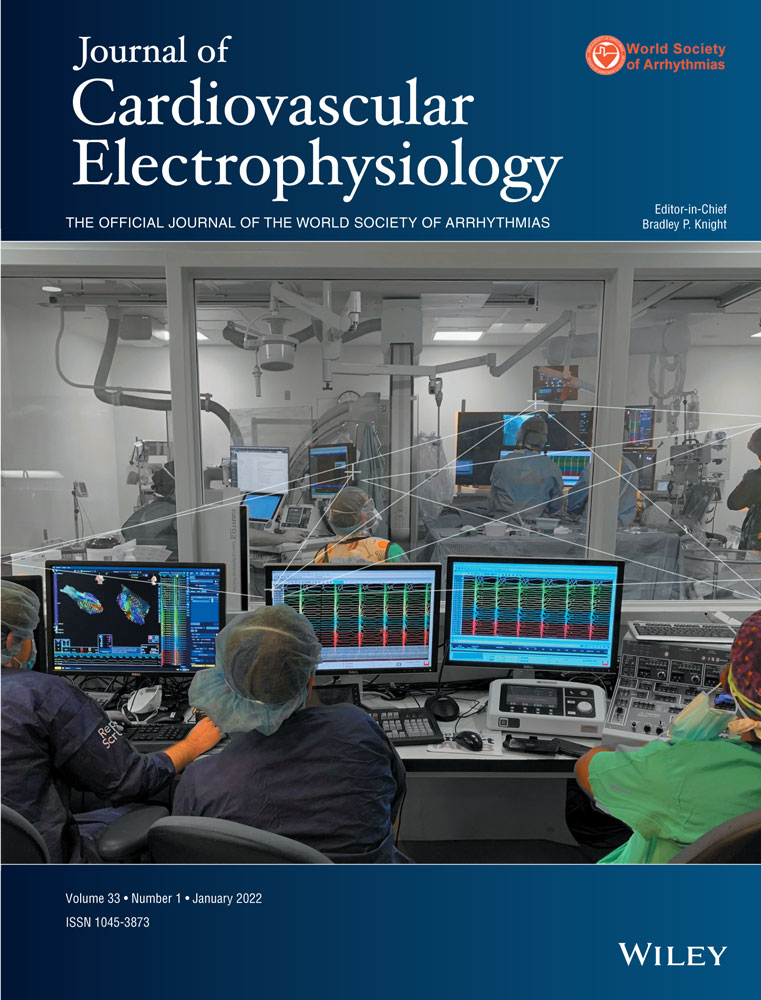Persistent left superior vena cava transvenous lead extraction: A European experience
Abstract
Background
Transvenous lead extraction (TLE) is rising in parallel to cardiac implantable electronic device implantations. Persistent left side superior vena cava (PLSVC) is a relatively common anatomical variant in the healthy population; TLE in patients with a PLSVC is rare.
Method
Data were collated from 6 European TLE institutes of 10 patients who had undergone lead extraction with a PLSVC. Patient demographics, procedural challenges and outcomes were reported.
Results
Ten patients aged 73.4 ± 7.8 years (60% male) underwent TLE of 20 leads (3 left ventricle, 10 right ventricle, 7 right atrium) with dwell time of 82.95 ± 39.1 months. Of the 10 cases, 4 had an infection indication and 5 were biventricular system extractions; 25% of the extracted leads were defibrillator leads. The majority of the procedures were completed in the cardiac catheterization suite (80%) under general anaesthesia (60%) by cardiologists (80%) using a rotational powered sheath (65%). The Tandem approach was used successfully in 3 cases. Complete procedural success was obtained in 100% of cases in the absence of complications within 127.4 ± 74.7 min. There was no 30-day mortality.
Conclusion
TLE in PLSVC is feasible albeit rare. Standard extraction techniques in experienced hands are associated with favorable outcomes; the Tandem procedure may be an additional technique to improve the safety and efficacy of TLE in PLSVC.
CONFLICT OF INTERESTS
Manav Sohal has received research funding from Abbott.
Christoph T. Starck has received consulting fees and travel expenses from Medtronic; consulting fees and research support from Biotronik; research support from Abbott; workshop fees, consulting fees, educational grants and research support from Cook Medical; consulting fees from Spectranetics/Philipps; consulting fees from Angiodynamics.
Patrizio Mazzone has received consulting fees from Boston Scientific, Abbott and Cook Medical.
Alexander Breitenstein has received consulting fees from Abbott, Bayer Health Care, Biotronik, BMS/Pfizer, Boston Scientific, Daiichy Sankio, and Medtronic. Educational grants from Biosense Webster, Biotronik and Actelion. Presenter fees from Abbott, Bayer Health Care, Biotronik, BMS/Pfizer, Boston Scientific, Daiichy Sankio, Medtronic, and Spectranetics/Philipps.
Jan Steffel has received consultant and/or speaker fees from Abbott, Amgen, Astra-Zeneca, Atricure, Bayer, Biosense Webster, Biotronik, Boehringer-Ingelheim, Boston Scientific, Bristol-Myers Squibb, Daiichi Sankyo, Medscape, Medtronic, Merck/MSD, Novartis, Pfizer, Sanofi-Aventis, WebMD, and Zoll. He reports ownership of CorXL. J. Steffel has received grant support through his institution from Abbott, Bayer Healthcare, Biosense Webster, Biotronik, Boston Scientific, Daiichi Sankyo, and Medtronic.
Christopher A. Rinaldi has received research funding from Abbott Medical, Medtronic and Boston Scientific.
Amir Zaidi has acted as a paid speaker for Cook medical.
Mark M. Gallagher has received research funding from Medtronic and Attune medical and has acted as a consultant and paid speaker for Medtronic, Biosense Webster and Cook Medical.
The other authors declare no conflict of interests.
Open Research
DATA AVAILABILITY STATEMENT
Data is on file and available upon reasonable request.




